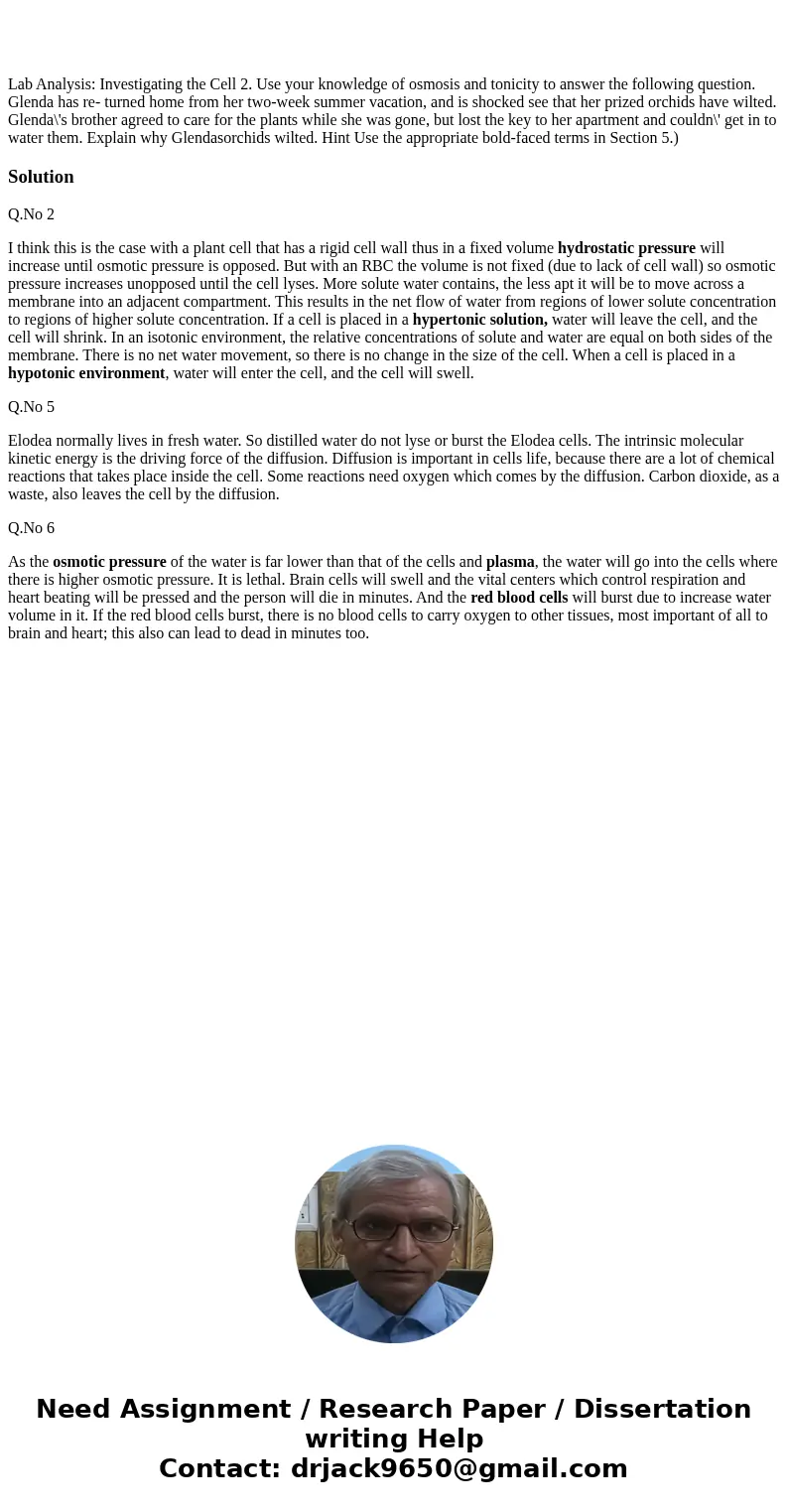Lab Analysis Investigating the Cell 2 Use your knowledge of
Solution
Q.No 2
I think this is the case with a plant cell that has a rigid cell wall thus in a fixed volume hydrostatic pressure will increase until osmotic pressure is opposed. But with an RBC the volume is not fixed (due to lack of cell wall) so osmotic pressure increases unopposed until the cell lyses. More solute water contains, the less apt it will be to move across a membrane into an adjacent compartment. This results in the net flow of water from regions of lower solute concentration to regions of higher solute concentration. If a cell is placed in a hypertonic solution, water will leave the cell, and the cell will shrink. In an isotonic environment, the relative concentrations of solute and water are equal on both sides of the membrane. There is no net water movement, so there is no change in the size of the cell. When a cell is placed in a hypotonic environment, water will enter the cell, and the cell will swell.
Q.No 5
Elodea normally lives in fresh water. So distilled water do not lyse or burst the Elodea cells. The intrinsic molecular kinetic energy is the driving force of the diffusion. Diffusion is important in cells life, because there are a lot of chemical reactions that takes place inside the cell. Some reactions need oxygen which comes by the diffusion. Carbon dioxide, as a waste, also leaves the cell by the diffusion.
Q.No 6
As the osmotic pressure of the water is far lower than that of the cells and plasma, the water will go into the cells where there is higher osmotic pressure. It is lethal. Brain cells will swell and the vital centers which control respiration and heart beating will be pressed and the person will die in minutes. And the red blood cells will burst due to increase water volume in it. If the red blood cells burst, there is no blood cells to carry oxygen to other tissues, most important of all to brain and heart; this also can lead to dead in minutes too.

 Homework Sourse
Homework Sourse